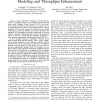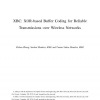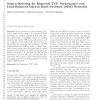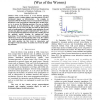BROADNETS
2007
IEEE
14 years 5 months ago
2007
IEEE
—Epidemic protocols assume that information of a random set of nodes is provided at each protocol round. By definition, the random set needs to be chosen uniformly and randomly ...
BROADNETS
2007
IEEE
14 years 5 months ago
2007
IEEE
Abstract— We present a “clean-slate” design for a networklayer routing and forwarding system intended to address shortcomings of the current Internet Protocol. Our design sep...
BROADNETS
2007
IEEE
14 years 5 months ago
2007
IEEE
— Today, IEEE 802.11 Wireless LAN (WLAN) has become a prevailing solution for broadband wireless Internet access while Transport Control Protocol (TCP) is the dominant transport ...
BROADNETS
2007
IEEE
14 years 5 months ago
2007
IEEE
—Rapid fault identification and localization in optical networks are crucial due to high data rates. These problems are more challenging than in traditional electronic networks ...
BROADNETS
2007
IEEE
14 years 5 months ago
2007
IEEE
BROADNETS
2007
IEEE
14 years 5 months ago
2007
IEEE
Abstract Recent advances in optical switching technology allows for the creation of networks in which data bursts are switched optically at each node, offering a greater degree of...
BROADNETS
2007
IEEE
14 years 5 months ago
2007
IEEE
Abstract— Overlay networks achieve new functionality and enhance network performance by allowing routing to be controlled at the application layer. However, these approaches resu...
BROADNETS
2007
IEEE
14 years 5 months ago
2007
IEEE
—“War of the worms” is a war between opposing computer worms, creating complex worm interactions as well as detrimental impact on infrastructure. For example, in September 20...
BROADNETS
2007
IEEE
14 years 5 months ago
2007
IEEE
BROADNETS
2007
IEEE
14 years 5 months ago
2007
IEEE
— Power-management approaches have been widely studied in an attempt to conserve idling energy by allowing nodes to switch to a low-power sleep mode. However, due to the inherent...





